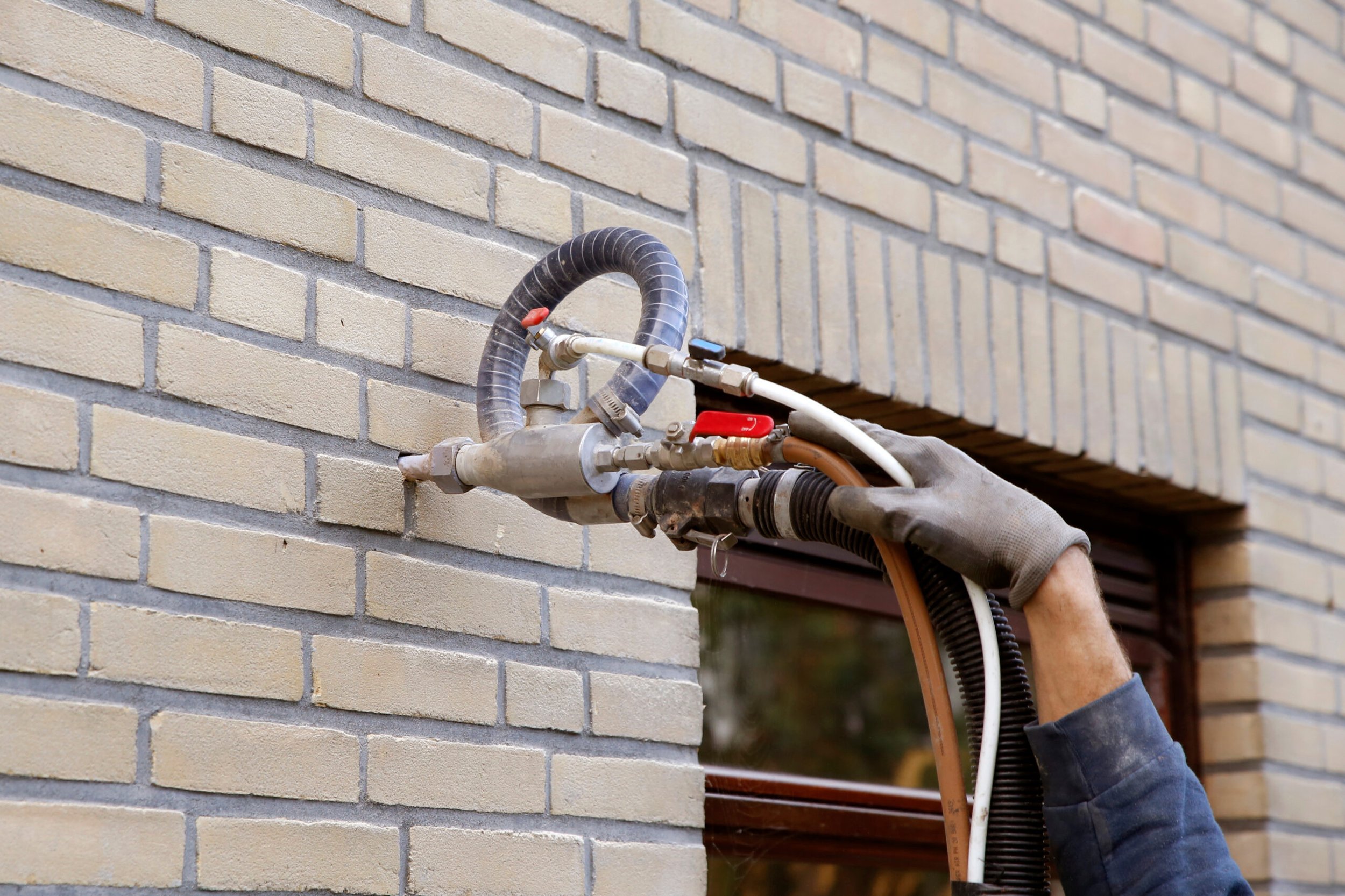
Cavity Wall
EWL are specialists at supplying & installing new Cavity Wall Insulation, or removing existing, leaving you with protected, more effecient perimeter external walls.
Cavity Wall Insulation Extraction
Your home’s Cavity wall insulation is often overlooked; it could be causing you problems!
Over time, certain types of cavity wall insulation—such as blown fibres, mineral wools, and urea formaldehyde foam—can deteriorate, become damp, or fail due to improper installation. When insulation absorbs moisture, it can trap water within the cavity, leading to damp and mould issues on internal walls. This can compromise the structural integrity of the building and negatively impact indoor air quality.
Why Remove Old Cavity Wall Insulation?
There are several reasons why insulation may need to be extracted:
Moisture Retention & Damp Issues – Wet insulation can allow moisture to transfer across the cavity, causing mould growth and damage to internal walls.
Incorrect Installation – Poorly installed insulation can create cold spots, reducing thermal efficiency and increasing heating costs.
Defective or Degraded Insulation – Over time, insulation materials can break down, losing their effectiveness and requiring replacement.
Roof or Guttering Issues – Leaks from roofing or faulty guttering can introduce water into the cavity, leading to insulation failure.
Improved Energy Efficiency – Removing ineffective insulation allows for the installation of modern, high-performance materials that enhance thermal retention.
The Extraction Process
Our experienced team follows a meticulous process to safely and efficiently remove old insulation:
Inspection & Assessment – A thorough survey is conducted to determine the condition of the existing insulation and identify problem areas.
Access Points Created – Small holes are drilled into the external wall to allow for extraction equipment to reach the cavity.
Vacuum Extraction – Specialist machinery is used to remove loose insulation materials, ensuring a clean and thorough extraction.
Bricks & Debris Removal – In cases where insulation is compacted or difficult to extract, bricks may be temporarily removed to access the cavity.
Cavity Cleaning – The cavity is cleared of any remaining debris or moisture to prepare for new insulation.
Reinstallation of High-Performance Insulation – Once the cavity is fully cleaned, new insulation can be installed, improving thermal efficiency and preventing future damp issues.
Cavity Wall Insulation Installation
Your home’s Cavity wall is well overdue an upgrade!
At EWL, we supply & install the latest in cavity wall insulation technology, providing homeowners with superior thermal efficiency, moisture protection, and long-term energy savings. Whether replacing outdated insulation or insulating a property for the first time, our advanced solutions ensure optimal performance, reduced heating costs, and improved building integrity.
Why Install Cavity Wall Insulation?
Upgrading to modern cavity wall insulation comes with significant advantages:
Superior Thermal Efficiency – Our cutting-edge materials minimise heat loss, keeping your home warmer in winter and cooler in summer.
Lower Energy Consumption – Efficient insulation reduces reliance on heating systems, leading to up to 30% savings on heating costs.
Protection Against Damp & Condensation – Advanced insulation technology prevents moisture transfer across the cavity, reducing the risk of mould and structural damage.
Flood & Weather Resistance – Certain insulation types provide added protection against wind-driven rain and flooding, safeguarding properties in exposed areas.
Structural Reinforcement – Closed-cell polyurethane foam strengthens masonry walls by bonding inner and outer leaves, an effective alternative to traditional wall tie replacements.
Breathability & Moisture Control – EPS bead insulation allows safe dispersal of water within the cavity, preventing damp issues while maintaining breathability.
Minimal Disruption – Our insulation injection methods are fast, effective, and require fewer drill holes, ensuring a smooth and efficient installation process.
The Installation Process
Our expert team follows a precise and efficient process to ensure optimal insulation performance:
Property Assessment – A survey is conducted to determine suitability and identify the best insulation material for your home, from a practical and cost perspective.
Drilling Access Points – Small holes are drilled at intervals along the external wall.
Insulation Injection – Using specialist equipment, the chosen insulation material is injected into the cavity, ensuring even distribution:
Isothane Technitherm Closed Cell Cavity Wall Insulation – A rigid polyurethane foam that fully expands to fill the cavity while maintaining structural integrity. Its airtight and watertight seal enhances insulation performance, prevents moisture ingress, and reinforces masonry walls. Ideal for properties with uneven cavities, missing wall ties, or exposure to harsh weather conditions.
Imperial Bead Cavity Wall Insulation – Expanded polystyrene (EPS) beads bonded with adhesive, create a lightweight, breathable, and water-repellent insulation layer. Unlike other cavity fill materials, EPS beads allow moisture to safely disperse, preventing water transfer across walls and reducing damp issues. Ideal for masonry walls, timber-framed properties, beam and block floors, and new builds.
Sealing & Finishing – Once the cavity is fully insulated, the drilled holes are sealed with cement to closely match the existing wall finish.
Final Inspection – A thorough check is carried out to ensure the insulation is correctly installed and performing effectively.

Ready to protect your home
and your future?




